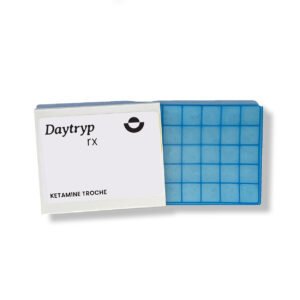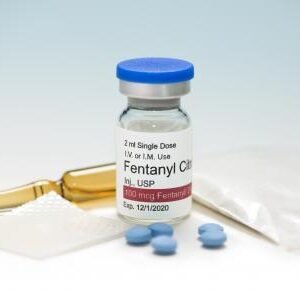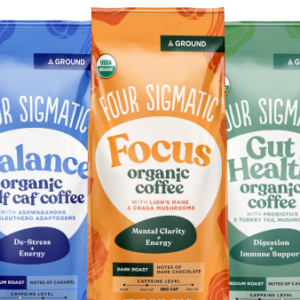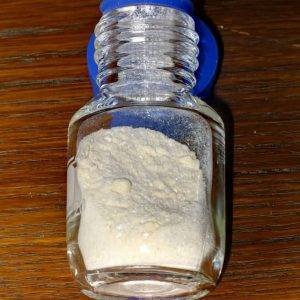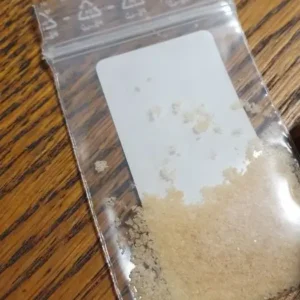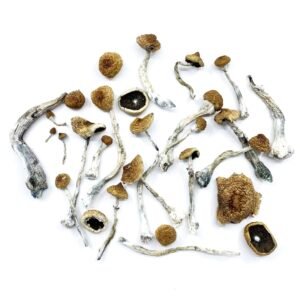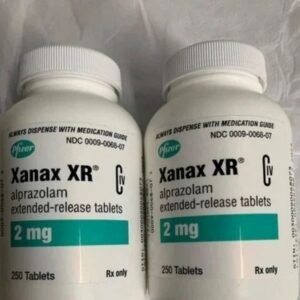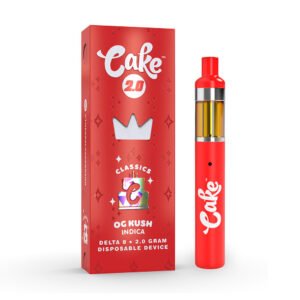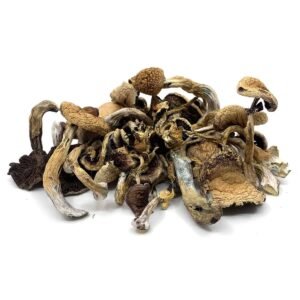Ecstasy/ MDMA
What Is Ecstasy/MDMA? | Order Ecstasy online
3,4-methylenedioxymethamphetamine (MDMA) is a substance that acts as both a stimulant and a hallucinogen. It creates an energizing effect, alters perception and sense of time, and enhances the enjoyment of touch. Young people often use MDMA to lower inhibitions and experience:- Euphoria
- Feelings of closeness and empathy
- Heightened sexuality
- Methamphetamine
- Ketamine
- Cocaine
- Cathinones
- Caffeine
-
- Magic Mushroom
P baeocystis
- $115.00 – $600.00Price range: $115.00 through $600.00
- Select options This product has multiple variants. The options may be chosen on the product page
-
- Magic Mushroom
blue meanie mushrooms
- $140.00 – $650.00Price range: $140.00 through $650.00
- Select options This product has multiple variants. The options may be chosen on the product page
-
- Ketamine
Liquid Ketamine
- $150.00 – $800.00Price range: $150.00 through $800.00
- Rated 4.00 out of 5
- Select options This product has multiple variants. The options may be chosen on the product page
-
- Ketamine
Ketamine Troche 200mg
- $180.00 – $800.00Price range: $180.00 through $800.00
- Rated 4.00 out of 5
- Select options This product has multiple variants. The options may be chosen on the product page
-
- EDIBLES
EDIBLE GUMMIES
- $150.00 – $1,200.00Price range: $150.00 through $1,200.00
- Rated 4.50 out of 5
- Select options This product has multiple variants. The options may be chosen on the product page
-
- Liquid LSD, Psychedelics
Liquid lsd
- $210.00 – $340.00Price range: $210.00 through $340.00
- Rated 4.33 out of 5
- Select options This product has multiple variants. The options may be chosen on the product page
-
- Fentanyl
Fentanyl
- $110.00 – $220.00Price range: $110.00 through $220.00
- Select options This product has multiple variants. The options may be chosen on the product page
-
- Magic Mushroom
Four sigmatic mushroom coffee
- $100.00 – $400.00Price range: $100.00 through $400.00
- Select options This product has multiple variants. The options may be chosen on the product page
-
- Sale!
- DMT
Buy 5-MeO-DMT online
- $220.00 – $1,000.00Price range: $220.00 through $1,000.00
- Select options This product has multiple variants. The options may be chosen on the product page
-
- Magic Mushroom
Psilocybe Cyanescens Mushroom
- $200.00 – $800.00Price range: $200.00 through $800.00
- Select options This product has multiple variants. The options may be chosen on the product page
-
- Sale!
- Magic Mushroom
Buy psilocybe azurescens
- $175.00 – $700.00Price range: $175.00 through $700.00
- Select options This product has multiple variants. The options may be chosen on the product page
-
- Oxycodone
Buy oxycodone online
- $150.00 – $420.00Price range: $150.00 through $420.00
- Rated 4.00 out of 5
- Select options This product has multiple variants. The options may be chosen on the product page
-
- MDMA
MDMA CRYSTAL
- $140.00 – $1,350.00Price range: $140.00 through $1,350.00
- Select options This product has multiple variants. The options may be chosen on the product page
-
- Ketamine
Ketamine Nasal spray
- $230.00
- Rated 4.00 out of 5
- Add to cart
-
- Sale!
- DMT
Buy 4-ACO DMT Online
- $180.00 – $1,300.00Price range: $180.00 through $1,300.00
- Select options This product has multiple variants. The options may be chosen on the product page
-
- DMT
Buy DMT Vape pens online
- $200.00 – $600.00Price range: $200.00 through $600.00
- Rated 5.00 out of 5
- Select options This product has multiple variants. The options may be chosen on the product page
-
- Sale!
- Magic Mushroom
Buy Cambodian Mushroom Online
- $200.00 – $1,000.00Price range: $200.00 through $1,000.00
- Rated 3.00 out of 5
- Select options This product has multiple variants. The options may be chosen on the product page
-
- Disposable vapes
BIG CHIEF DISPOSABLE VAPE
- $150.00 – $1,000.00Price range: $150.00 through $1,000.00
- Select options This product has multiple variants. The options may be chosen on the product page
-
- Sale!
- Disposable vapes
BIG CHIEF CARTS CBD BOX
-
$700.00Original price was: $700.00.$500.00Current price is: $500.00. - Add to cart
-
- Disposable vapes
MAD LABS CARTS
- $100.00 – $1,200.00Price range: $100.00 through $1,200.00
- Select options This product has multiple variants. The options may be chosen on the product page
-
- Disposable vapes
Stiiizy PODS
- $100.00 – $800.00Price range: $100.00 through $800.00
- Select options This product has multiple variants. The options may be chosen on the product page
-
- Mushroom liquid Culture
Mushroom liquid Culture Syringes
- $100.00 – $850.00Price range: $100.00 through $850.00
- Select options This product has multiple variants. The options may be chosen on the product page
-
- Psychedelic water
Buy Psychedelic Water online
- $60.00 – $330.00Price range: $60.00 through $330.00
- Select options This product has multiple variants. The options may be chosen on the product page
-
- Disposable vapes
Geek bar disposable vapes
- $120.00 – $850.00Price range: $120.00 through $850.00
- Select options This product has multiple variants. The options may be chosen on the product page
-
- Mushroom chocolate bars
Cap Up Chocolate bar
- $150.00 – $1,000.00Price range: $150.00 through $1,000.00
- Select options This product has multiple variants. The options may be chosen on the product page
-
- Mushroom chocolate bars
Alice Mushroom Chocolates
- $100.00 – $1,800.00Price range: $100.00 through $1,800.00
- Rated 4.80 out of 5
- Select options This product has multiple variants. The options may be chosen on the product page
-
- Lion's Mane Mushroom Liquid Culture Syringe
Lion’s Mane Mushroom Liquid Culture Syringe
- $150.00 – $900.00Price range: $150.00 through $900.00
- Select options This product has multiple variants. The options may be chosen on the product page
-
- Live Resin Gummies
LIVE RESIN GUMMIES | lime Gummies
- $130.00 – $1,000.00Price range: $130.00 through $1,000.00
- Select options This product has multiple variants. The options may be chosen on the product page
-
- Magic Mushroom
Magic mushrooms
- $200.00 – $1,000.00Price range: $200.00 through $1,000.00
- Rated 4.50 out of 5
- Select options This product has multiple variants. The options may be chosen on the product page
-
- Disposable vapes
STIIIZY disposable
- $130.00 – $2,000.00Price range: $130.00 through $2,000.00
- Rated 5.00 out of 5
- Select options This product has multiple variants. The options may be chosen on the product page
-
- Mushroom chocolate bars
Fusion bar
- $130.00 – $1,000.00Price range: $130.00 through $1,000.00
- Rated 3.78 out of 5
- Select options This product has multiple variants. The options may be chosen on the product page
-
- Magic Mushroom
B+ mushrooms
- $120.00 – $680.00Price range: $120.00 through $680.00
- Rated 5.00 out of 5
- Select options This product has multiple variants. The options may be chosen on the product page
-
- Xanax
Xanax
- $250.00 – $1,400.00Price range: $250.00 through $1,400.00
- Rated 4.50 out of 5
- Select options This product has multiple variants. The options may be chosen on the product page
-
- Disposable vapes
Cake Disposable Vape
- $150.00 – $900.00Price range: $150.00 through $900.00
- Select options This product has multiple variants. The options may be chosen on the product page
-
- Magic Mushroom
Albino Penis Envy
- $150.00 – $900.00Price range: $150.00 through $900.00
- Rated 4.00 out of 5
- Select options This product has multiple variants. The options may be chosen on the product page
-
- Mushroom chocolate bars
One Up Chocolate Bar
- $150.00 – $900.00Price range: $150.00 through $900.00
- Rated 3.00 out of 5
- Select options This product has multiple variants. The options may be chosen on the product page
-
- Disposable vapes
Muha Meds 2g
- $100.00 – $1,000.00Price range: $100.00 through $1,000.00
- Rated 5.00 out of 5
- Select options This product has multiple variants. The options may be chosen on the product page
-
- Disposable vapes
Packman disposable vapes 2g
- $150.00 – $900.00Price range: $150.00 through $900.00
- Rated 5.00 out of 5
- Select options This product has multiple variants. The options may be chosen on the product page
-
- Disposable vapes
Fryd Extracts
- $150.00 – $1,000.00Price range: $150.00 through $1,000.00
- Rated 5.00 out of 5
- Select options This product has multiple variants. The options may be chosen on the product page
-
- Mushroom chocolate bars
Polkadot Mushroom chocolate bar
- $100.00 – $700.00Price range: $100.00 through $700.00
- Rated 5.00 out of 5
- Select options This product has multiple variants. The options may be chosen on the product page
-
- Microdose
Psilocybin Microdose Capsules
- $100.00 – $900.00Price range: $100.00 through $900.00
- Rated 5.00 out of 5
- Select options This product has multiple variants. The options may be chosen on the product page
-
- Magic Mushroom
golden teacher mushroom
- $200.00 – $1,000.00Price range: $200.00 through $1,000.00
- Rated 5.00 out of 5
- Select options This product has multiple variants. The options may be chosen on the product page
-
- Magic Mushroom
Penis Envy
- $200.00 – $1,000.00Price range: $200.00 through $1,000.00
- Rated 5.00 out of 5
- Select options This product has multiple variants. The options may be chosen on the product page
-
- Crystal Meth
Crystal Meth
- $200.00 – $1,500.00Price range: $200.00 through $1,500.00
- Select options This product has multiple variants. The options may be chosen on the product page
-
- Magic Mushroom
Magic Mushroom
- $200.00 – $1,000.00Price range: $200.00 through $1,000.00
- Rated 5.00 out of 5
- Select options This product has multiple variants. The options may be chosen on the product page
-
- MDMA
MDMA
- $100.00 – $1,000.00Price range: $100.00 through $1,000.00
- Rated 4.00 out of 5
- Select options This product has multiple variants. The options may be chosen on the product page
-
- DMT
DMT
- $200.00 – $600.00Price range: $200.00 through $600.00
- Rated 5.00 out of 5
- Select options This product has multiple variants. The options may be chosen on the product page
-
- LSD
LSD
- $100.00 – $1,600.00Price range: $100.00 through $1,600.00
- Rated 5.00 out of 5
- Select options This product has multiple variants. The options may be chosen on the product page
-
- cannabis
Cannabis
- $200.00 – $2,000.00Price range: $200.00 through $2,000.00
- Rated 4.64 out of 5
- Select options This product has multiple variants. The options may be chosen on the product page
What Is the Origin of Ecstasy/MDMA?
MDMA is a synthetic drug. Most MDMA seized in the United States comes from Western Europe, with smaller amounts coming from Canada.
Common Street Names for Ecstasy/MDMA
MDMA is known by many street names, including:
- Adam
- Beans
- Clarity
- Disco Biscuit
- E
- Ecstasy
- Eve
- Go
- Hug Drug
- Lover’s Speed
- MDMA
- Peace
- STP
- X
- XTC
What Does Ecstasy/MDMA Look Like?
MDMA is mainly sold as tablets, often brightly colored and imprinted with logos to create “brands” that users recognize. These colorful pills are sometimes hidden among candy. It is also available in capsules, powder, and liquid forms.
How Is Ecstasy/MDMA Used?
Most users swallow MDMA tablets (typically 50–150 mg). Tablets can also be crushed and snorted, occasionally smoked, but rarely injected. Powder form is also common.
- Stacking: Taking three or more tablets at once
- Piggy-backing: Taking several tablets over a short period
A popular trend called “candy flipping” involves taking MDMA together with LSD.
Ecstasy/MDMA is often called a “party” or “club” drug. It is rarely used alone and is frequently mixed with alcohol, marijuana, or other substances.
What Is the Effect of Ecstasy/MDMA on the Mind?
MDMA mainly affects brain cells that use serotonin, a chemical important for mood, aggression, libido, sleep, and pain sensitivity. Research suggests MDMA may increase the risk of long-term, possibly permanent, memory and learning problems.
Effects on perception include:
- Euphoria
- Increased sensitivity to touch
- Heightened energy
- Sensual and sexual arousal
- A strong desire for physical contact and stimulation
Unwanted psychological effects can include:
- Confusion
- Anxiety
- Depression
- Paranoia
- Sleep difficulties
- Drug cravings

Onset and Duration of Ecstasy/MDMA Effects
The effects of Ecstasy/MDMA usually begin within 30 to 45 minutes after taking the drug. These effects typically last 4 to 6 hours but can sometimes persist for weeks.
What Is the Effect of Ecstasy/MDMA on the Body?
Users of Ecstasy/MDMA experience many effects similar to other stimulants like cocaine and amphetamines. These include:
- Increased motor activity
- Heightened alertness
- Raised heart rate and blood pressure
Unwanted physical effects may include:
- Muscle tension
- Tremors
- Involuntary teeth clenching
- Muscle cramps
- Nausea
- Faintness
- Chills
- Sweating
- Blurred vision
Severe dehydration is a common risk, especially because Ecstasy/MDMA is often used in hot, crowded environments like clubs and parties.
Research indicates that chronic Ecstasy/MDMA use can cause damage to the brain’s serotonin system.
What Are the Overdose Effects of Ecstasy/MDMA?
High doses of Ecstasy/MDMA can disrupt the body’s ability to regulate temperature, sometimes causing dangerously high body temperatures (hyperthermia). This can lead to:
- Liver, kidney, or cardiovascular failure
- Brain swelling
- Death
Repeated Ecstasy/MDMA use over a short period may cause harmful levels of the drug to build up in the body because of its complex metabolism.
Which Drugs Cause Similar Effects to Ecstasy/MDMA?
Ecstasy/MDMA produces both amphetamine-like stimulation and mild mescaline-like hallucinations.
What Is the Legal Status of Ecstasy/MDMA in the United States?
Ecstasy/MDMA is classified as a Schedule I drug under the Controlled Substances Act. This means it:
- Has a high potential for abuse
- Has no currently accepted medical use in treatment in the U.S.
- Lacks accepted safety for use under medical supervision
How Long Do Ecstasy’s Effects Last?
Effects begin within about an hour and last 4 to 6 hours. After-effects can linger longer, unpredictably.
Is Ecstasy Dangerous?
Yes, especially due to:
Risk of dehydration and overheating during activities like all-night dancing.
Increased body temperature, blood pressure, and heart rate, potentially causing organ failure, strokes, or seizures.
Potential liver damage and jaundice.
Risks increase for people with heart, liver, diabetes, epilepsy, or mental health conditions—some may be unaware they have these risks.
Unknown purity and content of street ecstasy increases danger.
Mixing with other drugs (illegal or prescription) can cause toxic interactions, especially with some antidepressants (MAOIs) or HIV medication (ritonavir).




